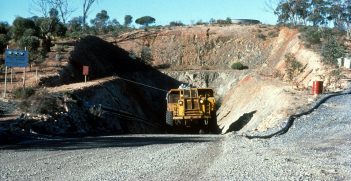Book Review: Rare Metals War
Global demand for rare metals is rapidly rising. Guillaume Pitron explores and exposes the geopolitical, economic, environmental, and societal impacts of securing supplies of these raw materials.
Rare metals, also often referred to as critical metals or critical minerals, include a list of fairly obscure metals such as lithium, cobalt, and the rare earth elements that form essential components of the enabling devices for renewable energy supply. These include rechargeable batteries, solar panels, and magnets for turbines and electric motors. These metals are also crucial to defence, telecommunications, and other digital technologies and therefore underpin the world’s transition to a high-tech, green energy future.
As demand rises, there are serious question marks around how, and from where, we will source these metals in the future. What’s more, current supply chains for some of these commodities come with unwanted baggage, including damage to the environment and human health, and imbalance in geopolitical power on the global stage.
Rare Metals War – The dark side of clean energy and digital technologies is the first book written by French lawyer and investigative journalist Guillaume Pitron. The issues raised give pause to the thinking that many of the world’s problems will be solved with a rapid shift to global energy generation from renewable sources. Pitron articulately outlines the precarious status of global supply of these raw materials, and the toll to the environment and human health that their extraction and processing has caused, particularly in the worlds leading rare metal player, China. The challenge of addressing global warming is clearly much more challenging than most of us recognise.
At just under 200 pages, the book outlines what rare metals are, why they are so important for our future, what their current production status is, and how their supply came to be dominated by just a few jurisdictions across the globe, such as China, South Africa, and the Democratic Republic of Congo. Pitron exposes a terrible legacy to rare metal production, including accounts of corruption, exploitation, environmental degradation, and toxic exposure. To some extent, these issues plague aspect of the mining industry globally, but with limited alternative sources, they seem to be more prevalent for supply of these specialist metal commodities.
Pitron is careful to avoid the specialist language that can often pervade literature on mineral resources and geopolitics, and so the book is easy reading. Many of the major threads of the book are effectively supported using his personal experience of places such as mining town of Baotao in northern China, a place notorious for toxicity and not easily accessed by citizens of Western countries.
A central narrative to the book – perhaps one that resonates with recent trade issues facing Australia – is the perilous nature (at least for Western countries) of Chinas dominance in not only supplying rare metals, but also in controlling manufacturing of the end-products of these metals, such as batteries and high-powered magnets, that are needed for renewable energy generation and storage. China is not unique in is geological endowment of rare metals resources. Rather, China recognised the strategic advantage of developing these industries many decades ago, while the Western world was happy to outsource the societal and environmental costs of metal extraction to foreign shores. The NIMBY (Not In My Back Yard) concept has never had such serious consequences.
Pitron does very well to cover the broad range of subject matter that interweave into the rare metal story, and the expansive appendix material and list of sources are very useful inclusions to the back-end of the book. There are, however, and few claims that are made on rather questionable grounds, such as reference to the commentary of John Petersen, who is known to present biased and often erroneous arguments against the carbon dioxide footprint of electric vehicles. In places, the narrative wanders into broader aspects of the mining industry, such as volatility in commodity prices and markets, which are neither new phenomena, nor restricted to rare metals.
In the final chapters of the book a case is made that there is a lack of defined resources of these metals to meet demand. This is somewhat reminiscent of the “peak” concept (e.g., peak oil, or peak copper), which postulates that we will soon run low on extractable natural resources to support society into the future. Pitron highlights the recent attention to deep-sea mining, space mining, and geopolitical wrangling over the South China Sea as direct consequences of our urgent need for new rare metal sources. At best, these arguments are an over-simplification. Firstly, global inventories of rare metal ore deposits––combining with the expected rate of new ore discovery––indicate there is no impeding shortage of in-ground resources of most rare metals. Secondly, the main drivers for deep-sea and extra-terrestrial mineral exploration are geopolitical and for sustaining space exploration, respectively. And territorial disputes over the South China Sea are much more to do with controlling maritime trading routes, fisheries, and extensive oil and gas reserves, rather than rare metals.
In closing the book, Pitron appeals for Western countries to ease reliance on foreign powers by restoring their sovereign capacity to extract and process rare metals. From the author’s Eurocentric view, Western counties have a long way to go to to re-establish their mining industries, yet this is not the situation in Australia. Australia is well placed to be a responsible supplier of rare metals. It is already the world’s largest producer of lithium, a major producer of rare earth elements, and has a number of advanced rare metals projects awaiting capital investment to get going. The minerals industry is often perceived as a contributor to global environmental degradation. Now it can be seen as the provider of the raw ingredients needed to transition us to a cleaner, greener future.
This is a review of Guillaume Pitron (translated by Bianca Jacobsohn), Rare Metals War – The dark side of clean energy and digital technologies (Scribe, 2020). ISBN: 9781925849325.
Carl Spandler is an Associate Professor and Director of the Australian Critical Minerals Research Centre at the University of Adelaide. He is a geologist with expertise in plate tectonics, geochemistry, and continent evolution. Carl’s research over the last decade has focussed on understanding how and where critical metal orebodies form on the Australian continent to better assist exploration efforts to discover new orebodies.
This article is published under a Creative Commons License and may be republished with attribution.





